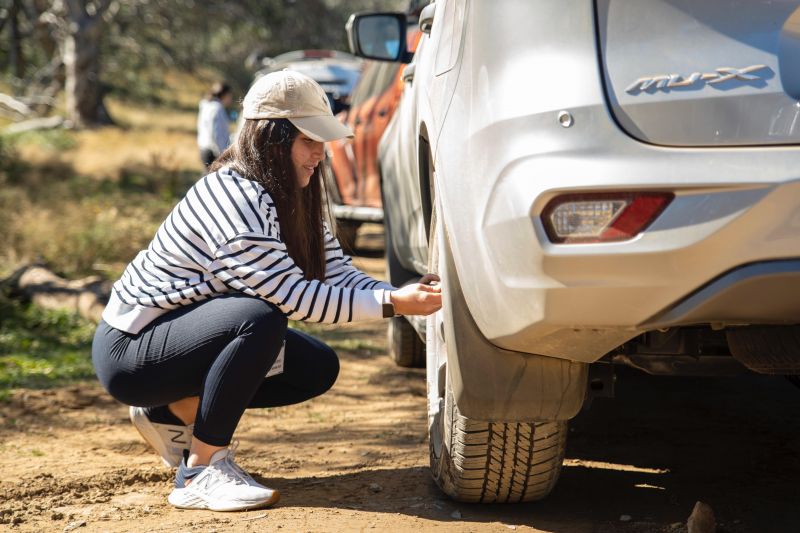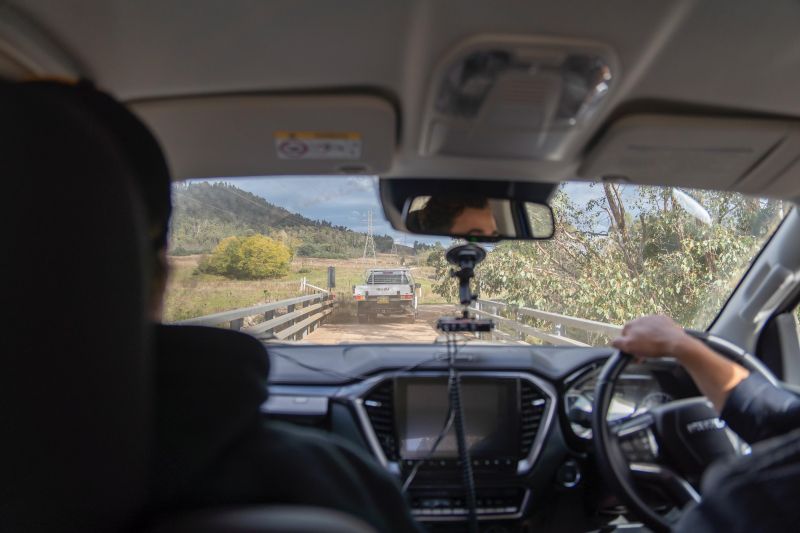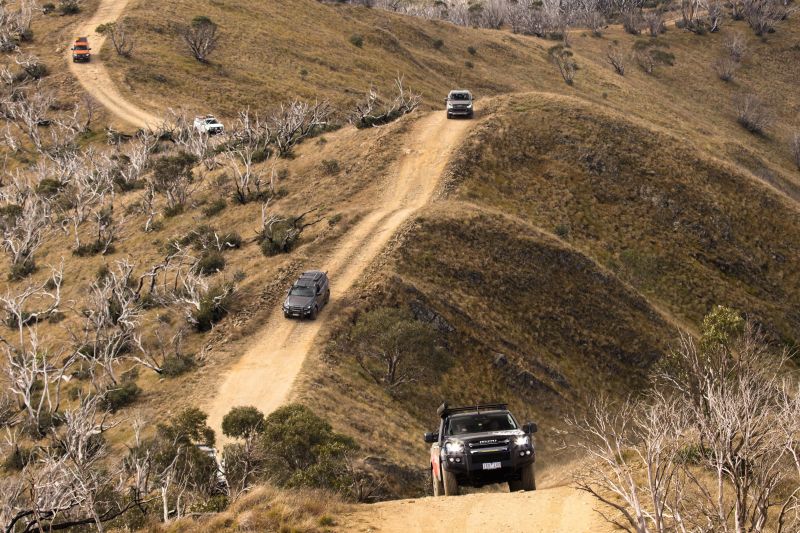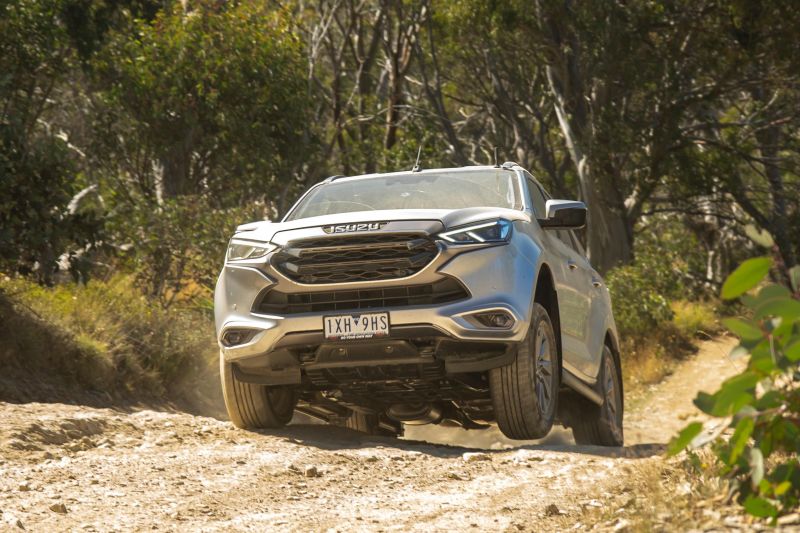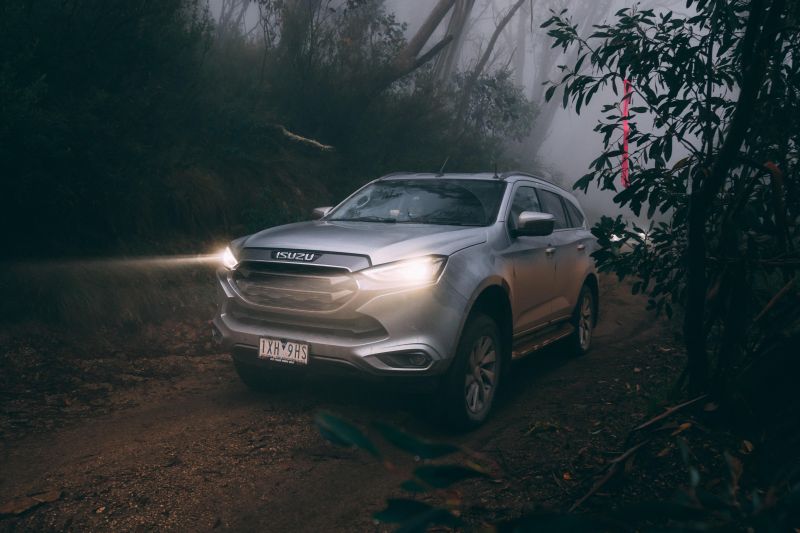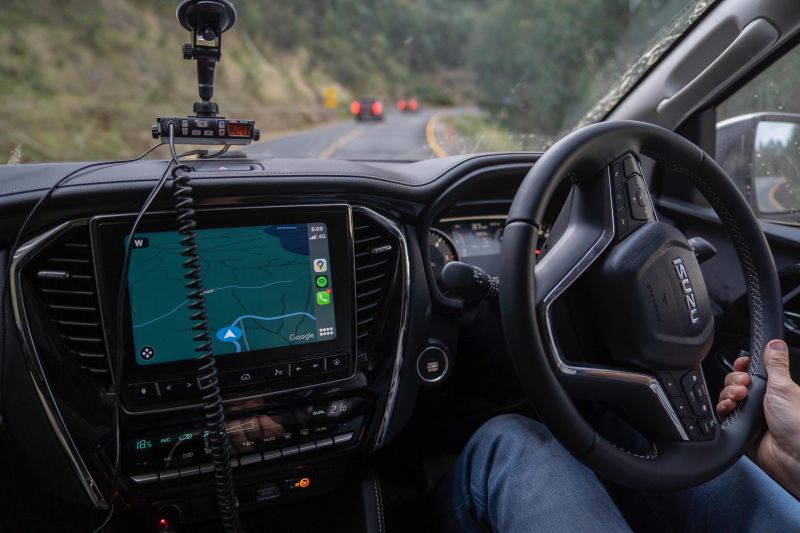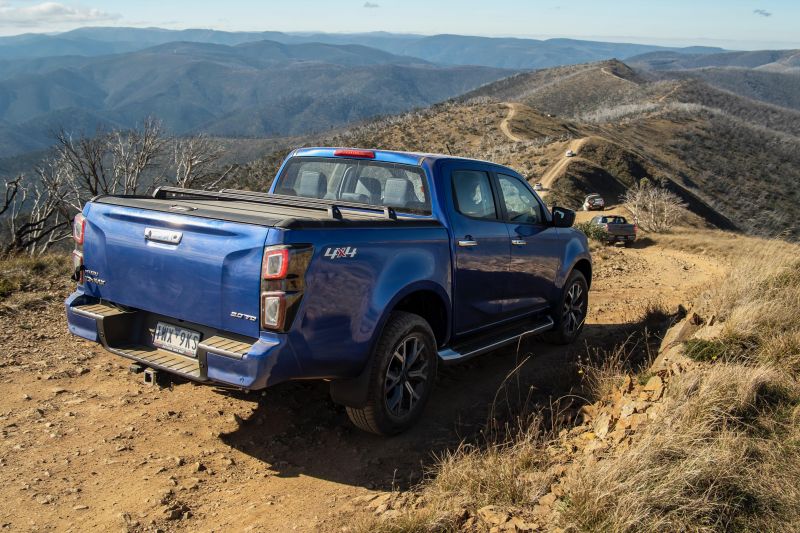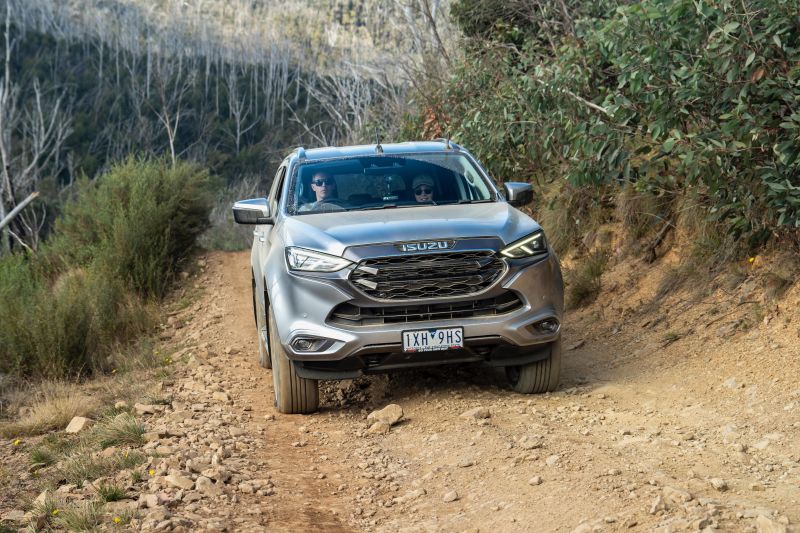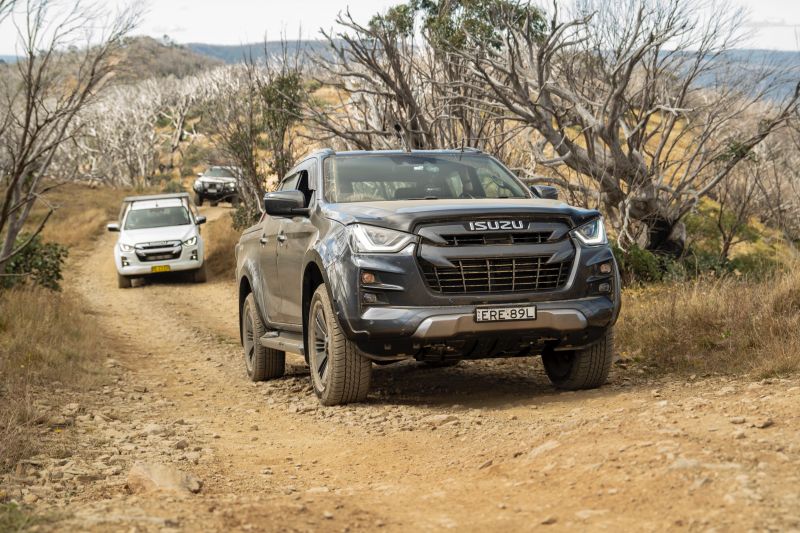Four-wheel driving is becoming increasingly popular among Australians, which means there are plenty of beginners out there starting to explore the outdoors.
I am also a beginner. Before starting at CarExpert, my experience off-road was exclusively from the passenger seat.
Now though? Well, I won’t be tackling the Simpson Desert any time soon, but I’ve picked up a few skills through the Isuzu Ute Australia i-Venture Club training program.
The program is run for Isuzu D-Max and MU-X owners to learn more about their vehicles and have the confidence to tackle four-wheel driving in this great country.
This year I’ve been off-roading in the Victorian High Country, learned how to tow in Brisbane, and am currently packing for a trip to Queensland to learn about driving on sand.
Since 2015, Isuzu Ute Australia has welcomed over 5000 owners across more than 246 i-Venture Club training days.
Here’s what I’ve learned about off-roading so far, which might just come in handy if you’re starting out in the wilderness – because when you’re starting out it can be overwhelming.
With that in mind, check out this video to get a rundown from an off-road expert about how all the controls in the four-wheel drive utes and family SUVs on sale in Australia work.
What to pack when travelling off-road for the day
It’s important to decide whether to go alone or in a convoy, and to be prepared if things go wrong.
Although tracks tend to be mapped, in the High Country it was clear how much of an impact mother nature, other drivers, and father time can have on an off-road route.
Driving in Victoria, where the weather can change on a dime, the difference between wet and dry running really surprised me. Dry rocks are grippy, wet ones might as well be ice – and hard dirt tracks quickly become churned mud tracks when the heavens open.
When packing the car before a big day – aside from snacks and hydration – we learned it’s important to consider the following:
- Winch
- UHF radio
- Recovery tracks
- Air compressor
- Tyre pressure monitor
- Vehicle recovery points front and rear
- Equipment to change a tyre including spare tyre
- Recovery equipment including snatch straps, shackles
This list can be much longer, but above sums up what we used on our High Country trip.
I recommend also having a look at how many recovery points your vehicle has, and knowing the best one to use when you’re stuck in the mud. You’re already stressed and muddy, having to search your car for a recovery point – or using the wrong one – is only going to make your day worse, so use the safe confines of your driveway to get a head start.
Although it’s a pain having one installed, a winch is also worth considering if you’re heading deep into the unknown. If there’s no one around to pull you out, being able to do it yourself can be a life-saver.
Tyre pressure
Before I understood why you adjust your tyre pressures and what it means, I would have said don’t worry she’ll be right… Turns out I was wrong.
Depending on the terrain, adjusting the tyre pressure provides your vehicle with the best chance at maintaining traction.
Before we pushed the start button on the MU-X, our trainer gave us a quick tutorial on what over-inflating or deflating your tyres can do to both the car, and the tyre.
Now before you ask me “should I be using all-terrain tyres or stock tyres from the factory?” it’s important to research the type of terrain you’ll be travelling on.
“When the track space becomes more rugged and grip harder to find, keep letting air out,” Adventure 4×4 instructor David Wilson told CarExpert.
“Deflating your tyres encourages the tyre’s tread and sidewalls to flex,” he said, which comes in handy on sand.
Tyre pressures can fluctuate between utes and SUVs. Before you go lowering or increasing your tyre pressure, check out the tyre placard on the driver’s side door to see where your tyre pressures should be for bitumen use first.
If you are deflating your tyres, it’s important to make sure you don’t over-deflate as this can cause damage to your rims and give you more problems – we learned this from experience.
We also learned it’s important when your tyre pressures are low that you make sure you’re not putting the vehicle under additional stress by traveling at high speeds.
“The slower speed regulates the temperature of the tyre at a sustainable level – too little air and going too fast equals a hot tyre that might go bang! Go slower, equals no problem,” said Mr Wilson.
For most of what we did in the Victorian High Country we used 265/50 Highway Terrain tyres.
Upping things to All Terrain tyres would have afforded us more traction in some situations, but comes at a cost on the road with less grip in wet conditions, and more noise from their tall, stiff tread blocks.
Four-wheel drive modes
i-Venture Club really took us back to the basics and taught us what all the buttons and drive modes do.
Knowing when to engage the vehicle from two-wheel drive into four-wheel drive is important. Once you’ve understood how and when to engage four-wheel drive, you can choose from 4 High (4H) or 4 Low (4L).
This is what is recommended:
- 2H: Bitumen and road surfaces
- 4H: Dirt, loose gravel and corrugation and sand
- 4L: Soft sand mud, water crossings, and steep inclines/declines
During the Victorian High Country road trip, we experienced a range of different surfaces including water crossings, rocks, and fresh mud.
The biggest thing I learned when engaging four-wheel drive is patience. I now enjoy hearing the clunk when the car goes from 4H to 4L, or when the light flashes on the dash once you engage 4H from 2H. That means it’s showtime, baby.
If you’re going from 2H to 4H, you can engage this on the move at low speeds – however it’s recommended you stop and put the vehicle in neutral. To change into 4L the car needs to be in 4H first, and at a complete stop.
Although water crossings are dangerous they are also my favourite challenge. We experienced a few shallow and some fairly deep crossings over the course of the High Country and Anglesea training days.
When traveling through water crossings I can’t stress enough, make sure you know how deep the crossing is between driving through it. In some off-road situations, you can reverse out of trouble and start again. If your car has become a submarine, you can’t.
Four-wheel drive assistance features
Hill-descent control
Traveling through the Blue Rag trail in the Victorian High Country, all the mountains we climbed meant we did a lot of downhill driving.
Most SUVs have hill-descent control, but I had never engaged it prior to my i-Venture Club training days.
Hill-descent control allows the vehicle to maintain a very slow, controlled speed downhill while you focus on navigating the road ahead. The highest speed we used HDC in was around 4km/h, just to give you an idea.
Differential lock
A differential lock was, for me, a bit of a get out of jail free card.
Unless you’re taking your car off-road there is no need to use the differential lock, so learning to use it for the first time can be liberating but scary.
A differential lock forces the rear (and/or front if applicable) wheels to turn at the same speed, which can help provide better traction in situations where one wheel is stuck, hanging in the air, or has no grip.
We used this a few times throughout our High Country itinerary but it wasn’t until we had our one-day introduction to 4×4 training session in Angelsea, Victoria that I really got to understand its benefit.
Rough Terrain Mode
This feature is the reason why I prefer the MU-X over the D-Max.
I found this button fairly handy and it gave me that extra bit of confidence especially on the Blue Rag track – pictured below.
Isuzu Ute Australia best describes RTM as the following: “provides an extension of traction control. Rough Terrain Mode throttle control limits wheel spin, even if the accelerator is fully pressed thus controlling torque at the wheel, allowing the vehicle to proceed.”
Although some would argue the button is just encouraging laziness or inexperienced 4×4 drivers to become qualified ones, I would argue they are right on both accounts, however don’t ask me why or how but I almost rely on it now and select my Isuzu vehicles based on this one single feature.
Driving to explore the most remote parts of Australia and chucking a four sleeper caravan on the back – which thanks to I-Venture Club I know how to do now – is on my bucket list and this series of training days has provided me the real word and classroom knowledge that I didn’t know I needed.
Let’s be really clear: I don’t want to see any readers taking their 4×2 or AWD – very different to 4×4 – off road anytime soon. Although it’s my job writing about the latest driver who is bogged on a beach as the tide comes in, let’s face it when you’re the hooligan that’s done it it’s not a great feeling.
This now brings me to my final point, if you’re thinking about going off-road with your four-wheel drive for the first time, I hope these helpful tips have taught you a thing or two however, your biggest take away should be prepare right, and just go for it!
Let me know in the comments your top four-wheel driving tips and if you found these tips useful as a first time four-wheel driver.
MORE: Everything Isuzu D-MAX
MORE: Everything Isuzu MU-X
MORE: 2024 Isuzu MU-X review
MORE: 2023 Isuzu D-MAX off-road review

